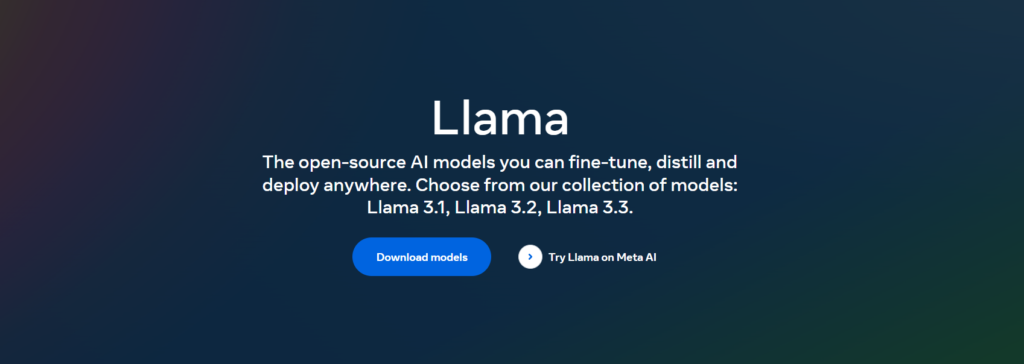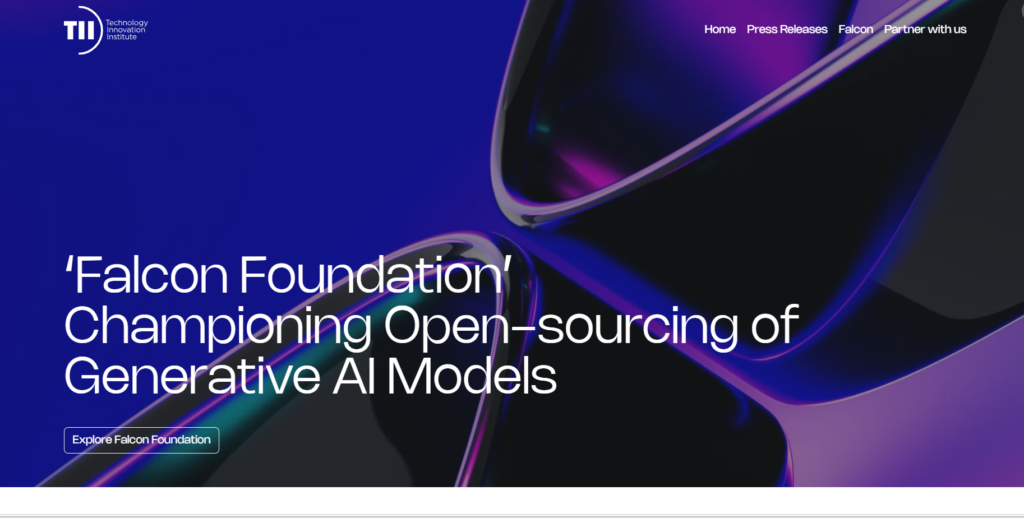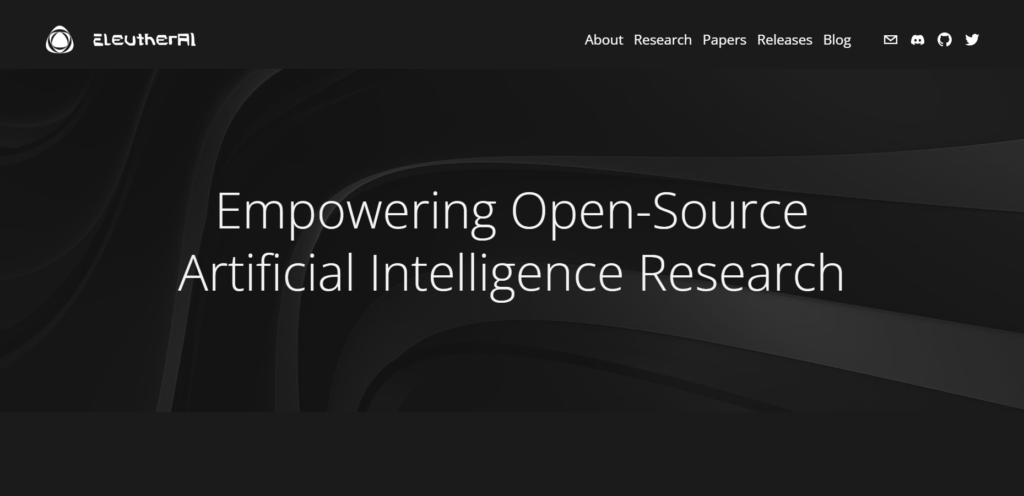In today’s rapidly evolving AI landscape, large language models (LLMs) have become essential tools for developers looking to build innovative applications. While commercial models like GPT-4 and Claude Opus offer impressive capabilities, their pricing can be prohibitive for many developers, especially those working on side projects or startups with limited budgets.
Fortunately, there are numerous free LLMs available that can deliver substantial value for various use cases. In this article, I’ll explore the top 10 free LLMs that developers can leverage today, highlighting their strengths, limitations, and ideal applications.
1. Llama 3 by Meta
Meta’s Llama 3 models represent some of the most capable open-source LLMs available today, with versions ranging from 8B to 70B parameters. Released in 2024 as the successor to the widely adopted Llama 2 family, these models have raised the bar for open-source AI performance. Llama 3 was trained on a massive dataset of text and code, using Meta’s extensive computational resources to create models that approach or sometimes exceed the capabilities of earlier commercial models. The Llama 3 family includes both base models and instruction-tuned variants (Llama 3 Instruct), with the latter being specifically optimized for following user instructions and chat applications. Meta’s decision to release these powerful models under a permissive license has significantly democratized access to cutting-edge AI capabilities.

Advantages
- Strong performance across a wide range of tasks.
- Multiple size options to fit different deployment requirements.
- Commercial usage allowed under permissive license.
- Excellent for both inference and fine-tuning.
- Regular updates from Meta’s research team.
Disadvantages
- Larger variants require significant compute resources.
- May hallucinate more frequently than premium commercial models.
- Limited context window compared to some commercial alternatives.
Llama model is best fit for General-Purpose applications, text generation, summarization, and creating custom assistants. The 8B variant works well for resource-constrained environments, while the 70B model approaches the capabilities of commercial models for many tasks.
Model Links
- meta-llama (Meta Llama)
- Meta AI’s Official Llama Page
2. Mistral Open Models
Mistral AI’s open models have made a significant impact in the open-source LLM space, with their Mistral 7B and Mixtral 8x7B models offering impressive performance. Founded by former DeepMind and Meta AI researchers, Mistral AI burst onto the scene in 2023 with models that demonstrated remarkable efficiency and capability for their size. What makes Mistral’s approach unique is their focus on architectural innovations like Sliding Window Attention and Grouped-query attention, allowing their models to achieve performance comparable to much larger competitors. The Mixtral 8x7B model introduced a Mixture of Experts (MoE) architecture to the open-source community, effectively allowing a 7B parameter model to selectively activate different “expert” neural pathways depending on the input, resulting in capabilities previously seen only in much larger models. Mistral’s commitment to releasing powerful models under permissive licenses has accelerated research and commercial adoption.

Advantages
- Excellent performance-to-size ratio, especially Mistral 7B.
- Mixtral 8x7B offers near-commercial quality for many tasks.
- Relatively modest compute requirements for deployment.
- Permissive Apache 2.0 license.
- Strong multilingual capabilities.
Disadvantages
- Limited instruction following compared to specialized models
- Smaller context window than some alternatives.
- Less developed ecosystem than Llama models.
Mistral models are best fit for applications requiring strong language understanding with reasonable computing requirements. Particularly good for content generation, classification tasks, and multilingual applications.
Model Links
- Mistral 7B on Hugging Face
- Mixtral 8x7B on Hugging Face
- Mistral AI’s GitHub
3. Gemma (Google)
Google’s Gemma models (2B and 7B) are lightweight, efficient LLMs designed for responsible AI development. Released in early 2024, Gemma represents Google’s entry into the open-source model space after years of keeping their most advanced models behind APIs. Built on the same research and technology that powers Google’s larger Gemini models, Gemma distills this knowledge into much smaller parameter counts that can run efficiently on consumer hardware. The Gemma family includes both base models for researchers and instruction-tuned versions optimized for assistive use cases. Google developed these models with a focus on responsible AI principles, implementing extensive safety measures and evaluations before release. Notably, Gemma models were optimized for deployment across multiple frameworks including JAX, PyTorch, and TensorFlow, making them particularly accessible to developers regardless of their preferred toolchain.
Advantages
- Exceptional performance for their size.
- Optimized for efficient deployment.
- Designed with responsible AI principles.
- Well-documented with strong support materials.
- Compatible with Keras, JAX, and PyTorch
Disadvantages
- Smaller parameter counts limit overall capabilities.
- Not as versatile as larger models.
- Less community support compared to Llama or Mistral.
Gemma model is best fit for edge devices, mobile applications, and scenarios where compute efficiency is crucial. The 2B variant is particularly suitable for on-device deployment.
Model Links
4. Phi-3 by Microsoft
Microsoft’s Phi-3 models represent some of the most efficient small language models available for developers. Building on the success of the earlier Phi-1 and Phi-2 research models, the Phi-3 family (released in 2024) brings production-ready capabilities to remarkably small parameter ranges of 3.8B, 7B, and 14B. What distinguishes Phi-3 from competitors is Microsoft’s focus on high-quality training data rather than just scaling up model size. The Phi series pioneered the “textbook-quality data” approach, where models are trained on carefully curated educational content that teaches concepts in a logical, clear manner. This has resulted in models that demonstrate strong reasoning capabilities and technical understanding despite their compact size. Phi-3 models are particularly notable for their code generation abilities and performance on academic benchmarks, often matching or exceeding the capabilities of models many times their size. Microsoft released these models under an MIT license, making them accessible for both research and commercial applications.
Advantages
- Outstanding performance for their size (3.8B – 14B parameters).
- Excellent reasoning capabilities.
- Strong code generation abilities.
- Low inference costs MIT license for broad usage.
Disadvantages
- Smaller context window than larger models.
- Less robust for complex, creative tasks.
- More limited multilingual capabilities.
Phi-3 is bet fit for applications requiring reasoning, code generation, and general language tasks with limited computational resources. Particularly strong for technical and educational applications.
5. Bloom
BLOOM is a multilingual LLM developed by BigScience, available in sizes ranging from 560M to 176B parameters. Launched in 2022, BLOOM represents one of the most ambitious open science collaborations in AI history, involving over 1,000 researchers from more than 70 countries coordinated by Hugging Face. Unlike most models developed by single companies, BLOOM was created with a focus on linguistic diversity, training on a dataset spanning 46+ languages and 13 programming languages. This massive collaborative effort aimed to democratize access to large language models outside the handful of tech giants that could afford to build them. The largest BLOOM model (176B parameters) was trained on the Jean Zay supercomputer in France, requiring approximately 1.3 million hours of computation and several months of continuous training. It was released under the Responsible AI License (RAIL), which permits commercial use while restricting applications that could cause harm. BLOOM’s development process also pioneered open methodologies for documenting training data and model limitations that have influenced subsequent open-source projects.
Advantages
- Exceptional multilingual capabilities (supports 46+ languages).
- Community-focused development approach.
- Available in multiple sizes for different requirements.
- Responsible AI focus built into development
Disadvantages
- Older architecture compared to newer models.
- Larger variants require significant compute.
- Performance lags behind newer models of similar size.
Model Links
6. MPT (MosaicML)
MosaicML’s MPT models offer a range of specialized variants optimized for different tasks. Introduced in 2023 by MosaicML (now part of Databricks), the MPT (MosaicML Pretrained Transformer) family was designed to demonstrate efficient training techniques that could significantly reduce the cost of building large language models. MPT models were built using MosaicML’s Composer library and training methods, showcasing cost savings of up to 70% compared to traditional training approaches. Unlike many other models that offer general-purpose variants, MPT was released in several task-specific versions including MPT-7B-Instruct for instruction-following, MPT-7B-Chat for conversational use, MPT-7B-StoryWriter for creative writing, and MPT-7B-Code for programming tasks. What makes MPT particularly notable is its implementation of FlashAttention and ALiBi (Attention with Linear Biases) position embeddings, allowing it to handle sequences of up to 65K tokens – much longer than many contemporaries. This extended context window makes MPT especially valuable for tasks involving long documents or conversations.
Advantages
- Task-specific variants (chat, instruct, code).
- Extended context window in some variants (up to 65K tokens).
- Well-documented with example code Apache 2.0 license.
- Good performance on long-context tasks
Disadvantages
- Less cutting-edge performance than newer models.
- Fewer size options than some alternatives.
- Less active development compared to Meta or Mistral models.
Model Links
7. Falcon by Technology Innovation Institute
Falcon models are powerful open-source LLMs developed by the Technology Innovation Institute, available in 7B, 40B, and 180B parameter sizes. Launched in 2023 by the Technology Innovation Institute (TII) in Abu Dhabi, the Falcon models represented a significant advancement in open-source LLMs, particularly for their impressive performance-to-parameter ratio. Falcon models pioneered several architectural innovations, including multi-query attention which significantly speeds up inference while maintaining quality. One of Falcon’s distinguishing features was its training methodology, using a carefully curated 1.5 trillion token dataset (RefinedWeb) that emphasized quality over quantity. The Falcon family was also notable for its focus on Arabic language capabilities alongside English, addressing a gap in representation for Arabic speakers in the AI space. When released, Falcon-40B outperformed many larger models on standard benchmarks, demonstrating the importance of data quality and architectural choices over raw parameter count. The Falcon-180B model was, at its time of release, one of the largest open-access models available, approaching the capabilities of closed commercial systems.

Advantages
- Very strong performance, especially in the larger variants.
- Apache 2.0 license
- Optimized for English and Arabic content.
- Good balance of performance and efficiency.
- Strong reasoning capabilities
Disadvantages
- Less community support compared to Llama or Mistral.
- Larger variants require significant compute resources.
- More limited multilingual capabilities (beyond Arabic and English).
Falcon models best fit for applications requiring strong reasoning and knowledge capabilities, particularly for English and Arabic content. The 40B variant offers a good balance of performance and resource requirements.
Model Links
8. Orca 2 by Microsoft
Microsoft’s Orca 2 models focus on reasoning capabilities and following complex instructions accurately. While both Orca 2 and Phi-3 come from Microsoft, they represent different approaches to small language models. Unlike Phi-3, which prioritizes general-purpose capabilities and efficiency, Orca 2 specifically emphasizes step-by-step reasoning and instruction following through its specialized training methodology. Orca 2 was trained using a process called “explanation tuning,” where it learns from explanations generated by larger models, rather than just their final answers.
Advantages
- Excellent reasoning and instruction-following abilities.
- Strong performance despite modest parameter counts.
- Well-suited for educational applications.
- Good documentation and integration examples.
- Focused design principles.
Disadvantages
- Less general-purpose than some alternatives.
- More limited creative capabilities.
- Smaller community compared to larger open-source projects.
Orca 2 model is best fit for applications requiring careful reasoning, educational tools, and scenarios where accurate instruction following is critical. Less ideal for creative content generation.
Model Links
9. Pythia by Eleuther AI
The Pythia suite of models from EleutherAI ranges from 70M to 12B parameters and is designed for research transparency. Released in 2023 by EleutherAI, a grassroots collective of AI researchers, the Pythia models were created with a unique goal in mind: enabling the scientific study of language model behavior during training. Unlike most model releases that only provide the final trained weights, Pythia offers 154 checkpoints captured at regular intervals during the training process of models across eight different sizes. This unprecedented level of transparency allows researchers to study how language models develop capabilities, memorize training data, and form internal representations over time. The Pythia models were trained on the Pile, a diverse collection of text datasets curated by EleutherAI, using a consistent architecture based on GPT-NeoX. What makes Pythia particularly valuable to the research community is the careful documentation of every aspect of the training process, including the exact data splits, tokenization details, and hyperparameters used. This comprehensive approach has made Pythia an important resource for interpretability researchers seeking to understand how and why language models work.

Advantages
- Multiple checkpoints during training for research.
- Range of sizes for different applications.
- Apache 2.0 license.
- Strong community support and documentation.
- Good for fine-tuning experiments.
Disadvantages
- Performance lags behind newer models of comparable size.
- Less optimized for production deployments.
- Limited specialized capabilities.
Pytheia model is best fit for research applications, model fine-tuning experiments, and educational contexts. Particularly valuable for understanding LLM training dynamics.
Model Links
- Pythia Models on Hugging Face.
- Pythia GitHub Repository.
- EleutherAI’s Pythia Technical Report.
10. FLAN-T5 by Google
Google’s FLAN-T5 models build on the T5 architecture with instruction tuning for improved usability. Unlike most models in this list which use decoder-only architectures, FLAN-T5 is an encoder-decoder model, making it particularly well-suited for structured generation tasks. The “FLAN” in the name stands for “Fine-tuned LAnguage Net,” referring to Google’s instruction tuning methodology that dramatically improves the model’s ability to follow instructions across a variety of tasks.
FLAN-T5 comes in several sizes ranging from small (80M parameters) to XXL (11B parameters), offering flexibility for different computational constraints. What makes FLAN-T5 unique is its training approach – it was fine-tuned on a mixture of more than 1,800 diverse tasks phrased as instructions, allowing it to generalize well to new tasks it wasn’t explicitly trained on.
Advantages
- Excellent instruction-following capabilities.
- Multiple size options (small to xxl).
- Well-documented with strong research backing.
- Good for fine-tuning on specific tasks.
- Efficient architecture
Disadvantages
- Older architecture compared to newest models.
- More limited overall capabilities than decoder-only models.
- Less suitable for open-ended generation.
Flan model is best fit for structured tasks like classification, summarization, and question-answering. Particularly strong when fine-tuned for specific applications where precise outputs are required.
Model Links
Conclusion
The landscape of free LLMs continues to evolve rapidly, with new models and capabilities emerging regularly. For developers, the right choice depends on your specific application requirements, computational resources, and the balance of capabilities you need.
When selecting a model for your project
- Consider your compute constraints: Smaller models like Gemma 2B or Phi-3 Mini may be sufficient for many applications while requiring far fewer resources.
- Evaluate specific capabilities: Some models excel at reasoning, others at code generation or multilingual support.
- Check license compatibility: Ensure the model’s license aligns with your intended use, especially for commercial applications.
- Look at the ecosystem: Models with larger communities often have better documentation, more examples, and more troubleshooting resources.
By leveraging these free LLMs effectively, developers can build sophisticated AI-powered applications without the significant costs associated with commercial API services.
What free LLMs have you used in your projects? Share your experiences in the comments below!